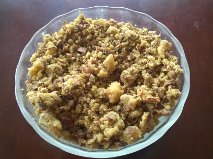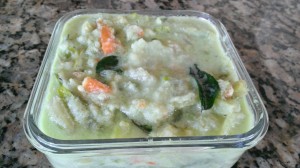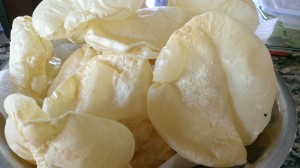Japam, madi and achaaram are some of the philosophies Kom Patti believed in. Her neighbors knew her as a madisar mami with modest upbringing. She never ate any fancy food at restaurants (lest that interferes with her achaaram) and had an early humble dinner and fasted on ekadasi, sashti and many other days. Patti who stayed with mama lived in a fairly busy household. While Mami managed the morning pandemonium at home, battling three school going kids in the midst of their fight over a missing pencil or an undone homework, trying to wake up the third one, who feigned sleep amidst such morning mayhem, so she might be excused from school and a disciplinarian Mama, who tried to herd them all, in the process of getting ready to work (I remember mama changed the setting of the wall clock time, faster by a few minutes every day that nobody other than him knew what the current time was. Does that explain the commotion?), Pattis’s help came handy. Patti oiled and braided the girl’s hair into rettai pinnal (that sometimes not just the hair but the entire face shimmered in oil), manually scraped the coconut for the day’s chamayal, attended to the boiling milk and shut the pressure cooker which seemed to ignore this bedlam to gain attention and even packed lunches in metal tiffin carriers for them. Mami and Patti got time to breathe only after the foursome left home every week day.
Mami and Patti escaped out of home under the pretext of procuring the week’s vegetables with lots of manja pais in hand on Sundays. This was their “women’s day out” and they got onto a world rife with spicy gossips about the “edthira aathu mami” who screams at the daughter in law or the “kodi aathu” daughter in law who chinwags a lot about her mother in law, as they strolled to the market.
After one such day of such satiation, Patti and Mami brought back bags of vegetables and unable to stuff the fairly blossomed vazhai poo in their pais, Patti managed to hold the two vazahipoos on either hands. As my koshampodavai Patti thus entered the street, with a slow gait, like an acrobat walking on tight ropes, my cousin who was barely 5 years old and playing outside in the early morning sun, caught sight of this. She was aghast at the sight and yet could not restrain from informing her dad and other neighbors. She ran to a few houses and shouted, “Yenga Patti kozhi vangindu vandhirukka!” Madi aathu Geetha, Pakkathaathu Chandra, Edhiraalaathu kanaga and Mama all came out to see what went wrong with this achaaramana Patti. When they saw blossomed vazhaipoo with its bracts fairly wide open, the entire street laughed until they were blinded by tears. Poor Ramya had mistaken the bracts for wings of a chicken! For many years since then, Ramya was the laughing stock at all kalyanams during pandal kaal ritual.
While Ramya could at least be dismissed as a child who misunderstood, what excuse can be given to a girl who was married at the right age immediately following graduation and sent off to Bahrain? I have no idea if my sister had lived all her life closing her eyes at home, when vegetables were being cut. My paternal grandmother, Thakkama Patti assumed unassailable pride in the art of cutting vegetables uniformly, in geometric congruent shapes, in small sizes. It only appears that Latha, my sister lived in her own world oblivious of her surroundings.
Soon after she was married she flew to Bahrain and like most, her husband became the scapegoat of her culinary experiments. Knowing that her husband loved vazahaipoo, she decided to make paruppu usili, her maiden adventure! She carefully separated the bracts from the flowers and started cutting them. She beamed with pride as she saw the cut pieces resembling exactly like that of Patti’s. After all, it was all in her genes, she might have thought. But her husband was really surprised at what she had done. As he pointed out to her that she was cutting the purple bracts instead of the flowers, she refused to believe him. After all, she had heard of “yengaathu vazhakkam” and “ungaathu vazhakkam” from many married women. But her husband persuaded her to call my parents to find out. When Amma also confirmed that what she did was indeed wrong, the couple laughed too much, for, she had discarded all the flowers and had retained only the bracts!
As I recollect these incidents, the kitchen is wafting with the smell of vazahipoo paruppu usili and vazhaipoo kootu.
Vazahipoo Paruppu Usili
Ingredients:
vazhaipoo – 1 (flowers clearly separated from the bracts and the long pistil removed, and cut into small pieces), channa dal – 1/2 cup soaked in water, red chillies – 3, hing – a pinch, turmeric powder – a pinch, mustard seeds – 1 tsp, curry leaves – a sprig, oil to season (preferably coconut oil) and salt to taste.
Recipe
Grind the soaked channa dal with red chillies and hing into a thick paste and steam them. Crumble them when cool. The cut flowers will have to be stored in a pot of water with a little buttermilk (otherwise it turns black) until it is prepared. Season oil in a pan with mustard seeds, hing and curry leaves. Wash the flowers many times to clear off the buttermilk stain and drain thoroughly. Add them to the pan. Add about 1/2 a cup of water, turmeric powder and salt and cooked till soft and all the water is absorbed. Now add the crumbled channa dal mixture. Toss and turn the usili.
Paruppu usilis get along very well with moar kozhambu and sambar.
Vazhaipoo Kootu
Ingredients:
Vazhaipoo – 1 (cut as in previous recipe), moong dal – 1/2 cup, grated coconut – 1/2 cup, red chillies – 2 or 3, jeera – 1 tsp, turmeric powder – a pinch, coconut oil – 2 tsp, mustard seeds – 1 tsp, urad dal – 1/2 tsp, curry leaves – few and salt to taste.
Wash and preserve vazhaipoo in water with a little buttermilk. Drain and cook in water. Add turmeric powder and salt and cook until soft. Cook moong dal in water with a little turmeric powder until soft. Drain the water from the plantain flowers and add to the moong dal. Grind grated coconut, red chillies and jeera into a fine paste and add to the dal- plantain flower mixture. Simmer for a few minutes and when it boils, season oil with mustard seeds, urad dal and curry leaves and pour on top of it.
The vazhaipoo kootu can be served with rice or as a side dish for samabr and rasam.
Bon Appetit!












